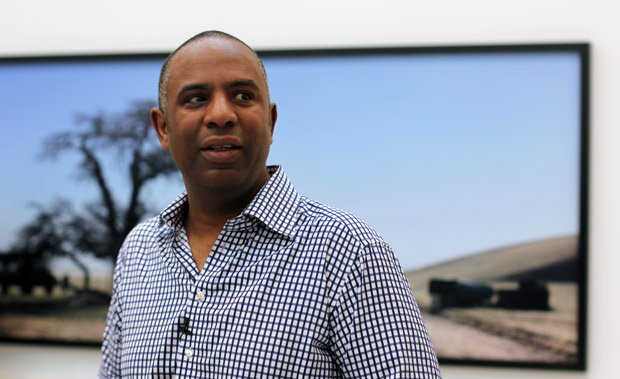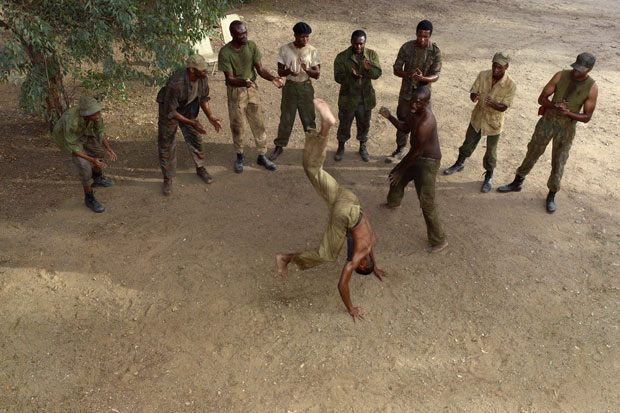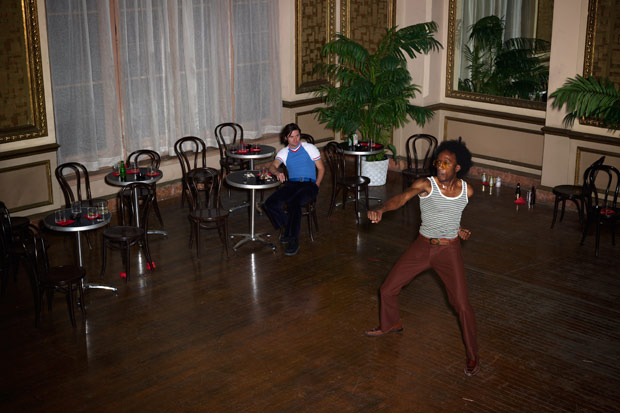Disco Angola
Stan Douglas’s recent photographic work features dancers and refugees

Opening his 11th solo show at the David Zwirner Gallery in New York City, photographer Stan Douglas has once again assumed the persona of fictional photographer. His last show at Zwirner, Midcentury Studio, comprised a series of mock press photographs documenting the post-war period. For Disco Angola, Douglas is playing the role of a ’70s photojournalist in New York’s disco scene and the recently liberated Angola. From the geographically and culturally disparate communities comes a unique dialogue about liberation, self expression and dance.

The show’s eight pieces are arranged in pairs that face each other on opposing walls. Each of the pieces explores a particular “event”; as Douglas explains, an event is “not just something that happens, but something that happens that’s so unfamiliar, so strange, so horrifying that it challenges the nature of truth at the time.” Pairing disco scenes against revolutionary moments, the event and its ramifications are further dramatized.
“Capoeira” is a photograph of a circle of Angolans practicing capoeira—the Brazilian art form that marries martial arts with dance—and is hung opposite “Kung-Fu Fighting”, which shows a disco dancer performing moves learned from Bruce Lee’s pioneering films. Together, the images break down the close relationship between conflict and dance, as well as the kinship between recently liberated Angolans and members of the New York gay community. At its heart, Douglas sees the connection between the Angolan Civil War and disco as both blissful periods that were ruined by the outsiders—both in the form of photojournalists and curious “scenesters”.

Explaining a bit of the history that informs the work, Douglas mentioned the long and bloody civil war that preceded Angola’s Carnation Revolution. “New York, in the 1970s, was almost a third world state,” elaborates Douglas, seeing the similarities between the war and the scene in NYC. “The federal government was not interested in supporting it. It was almost bankrupt. The subway system was dangerous, the parks were dangerous. It was in this condition that the ‘Disco Underground’ first appeared.”
Douglas brilliantly employs contemporary costuming and props, successfully transporting the viewer in to the respective scenes. Many of the works are inspired directly by a found photograph or are composites of several sources that serve as inspiration. While Douglas shoots on digital and avoids mimicking the photographic appearance of the the era, the casting and art direction are fully convincing. By discarding traditional photography’s notion of the “decisive moment” and the time stamp, Douglas opens up the medium to infinite possibilities.
Disco Angola is on display at the David Zwirner Gallery starting tonight, 22 March through 28 April 2012. See more images of the exhibition in our slideshow.
David Zwirner Gallery
525 West 19th Street
New York, NY 10011
Images courtesy of the artist and David Zwirner, New York


















